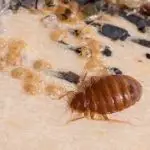How to Kill Bed Bugs: Effective Strategies for a Pest-Free Home
Introduction to Bed Bug Troubles
Welcome to the uninvited world of bed bugs, where the itch starts from just thinking about them. Imagine this: After a long day, you’re ready to curl up in the comfort of your own bed. Little do you know, a tiny army of parasitic bed bugs has been making a home in your sanctuary. These little critters come out to play when the lights go out, making the perfect breeding ground for a nightmare scenario. It’s a common tale, sadly, in homes around the globe. Now, let’s talk about why it’s so crucial to nix these pests from your life, stat!
Bed bugs are not only a nuisance but also serve as a beacon signaling poor hygiene and a lack of proper pest control. They’re the gatecrashers of your home environment, and trust me, they aren’t leaving without a fight. Unlike the common cold, there’s no season for bed bugs; they are year-round freeloaders, taking pleasure in your discomfort.

Have you ever witnessed a bed bug infestation? Let me paint you a picture. There’s the college student, Ella, who brought an age-old armchair into her dorm, not knowing it harbored a colony of bed bugs. Or the Johnson family, who unknowingly transported these pests back from their summer vacation, embedded in their luggage. Before long, red, itchy bites began to surface, and sleep became a battle against an unseen enemy. Admitting there’s a problem is the first step; taking swift action is the second.
Understanding why it’s imperative to combat these pests at the earliest sign of invasion can mean the difference between a few itchy bites and a full-blown infestation. For more in-depth knowledge, you might want to check out these efficient detection strategies and tips that can save your skin and your sanctuary from these bloodthirsty invaders.
Stay tuned, as we’ll dive deeper into tried-and-tested strategies to declare war on bed bugs. These critters may be tough, but equipped with the right arsenal, you can reclaim your home and sleep soundly once again. Ready to battle? Let’s go!
Understanding Bed Bugs: Habits and Biology
Let’s pull back the curtain on one of the most unwelcome guests in our homes – bed bugs. Ever wonder what it is about our cozy abodes that attracts these critters like a moth to a flame? It’s simple: bed bugs are lovers of warmth, carbon dioxide, and, most importantly, they’re fanatics about their blood meals, which they prefer to take from us! Think of them as the uninvited roommates who sneak into your bed for a midnight feast.
The life of a bed bug is an interesting one, and understanding it is key to sending these pests packing. From the nearly invisible eggs to the apple-seed-sized adults, bed bugs are masters of secrecy. Their lifecycle includes a five-stage nymph phase, each requiring a blood meal to molt and progress. These creatures aren’t just biting you for fun; they’re on a mission for growth!
Speaking of growth, did you know that a female bed bug can lay hundreds of eggs over her lifetime? That’s right; she uses a glue-like substance to stick her pearly white eggs in the tightest of spaces, ensuring the next generation of these tiny vampires has a fighting chance. They can take a mere month to develop from egg to breeding adult, making their population boom in what feels like an overnight nightmare.
It’s not just their rapid reproduction that’s alarming. Their survival tactics are akin to something out of a spy film. These pint-sized ninjas can go without a meal for months, lying in wait. They can travel over 100 feet in a night, but they typically prefer to stay close to their food source – yep, you guessed it, that’s us. And when they do feast, it’s a stealth operation that you won’t feel until it’s too late, thanks to an anesthetic in their saliva.
Homely environments are their prime territory – they thrive in the clutter and chaos of our everyday lives. A messy room can be a haven for these critters, giving them ample hiding spots to conduct their nocturnal activities undisturbed. This is why proper home pest control isn’t just about reacting to an infestation; it’s about creating an environment that’s inhospitable to these uninvited lodgers from the get-go.
So next time you snuggle up in your sheets, remember, knowledge is power! By understanding the habits and biology of bed bugs, you arm yourself with the know-how to combat these bloodthirsty intruders before they settle in for their next meal – at your expense.
Identifying a Bed Bug Infestation
Imagine this: you wake up with itchy welts on your skin, and you can’t figure out what’s biting you. Could it be mosquitoes, or something more alarming? Bed bugs are masterful hiders, but they do leave behind clues. In this segment, let’s decode the signs of a bed bug invasion in your sanctuary.
Firstly, look out for small, reddish-brown spots on your sheets or mattress. These stains can look like little rust spots, indicating that bed bugs have been feasting on you during the night. Secondly, you may find their discarded skins or shells around the edges of your mattress or hiding within the threads of your linens. These tiny, translucent exoskeletons are evidence of bed bugs growing and multiplying right under your nose!

Sometimes, you might even spot the culprits themselves if you’re vigilant. Adult bed bugs resemble apple seeds, both in size and shape. They might be scurrying away to their hideouts when you surprise them with a middle-of-the-night bathroom trip. Moreover, a musty, sweet odor can permeate the room—an odor produced by bed bugs’ scent glands. If your room suddenly smells like a wet towel that’s been left in the gym bag for too long, it’s time to investigate.
The occurrence of bed bug bites is another tell-tale sign. These bites often appear in lines or clusters on your skin, particularly on areas exposed while sleeping. If you notice such patterns accompanied by intense itching, chances are you’re dealing with bed bugs. For more guidance on detecting these pests, have a look at efficient detection strategies and tips.
Being aware of these signs is crucial in preventing a full-blown infestation. Bed bugs are easier to manage when caught early, so stay alert. Remember, it’s not just about looking for them in your mattress—these pests can also nestle into furniture, picture frames, and even power outlets. With a keen eye and knowledge of what to look for, you can spot an infestation before it spirals out of control.
Initial Steps to Take Against Bed Bugs
Discovering a bed bug infestation can send anyone into a panic. However, if you’ve just noticed these uninvited guests, take a deep breath and follow these essential first steps to gain control of the situation and pave the way for a pest-free home.
One of the fundamental actions to deal with bed bugs is to contain the infestation. Start by stripping your bed immediately and placing all bedding in sealed bags. Why? Because these little critters are masters of hide-and-seek, and any delay could allow them to spread to other areas.

Remember how bed bugs made an appearance at Aunt Linda’s last summer, hitching a ride on her suitcase and turning a family get-together into a bug-battling bonanza? It’s crucial to avoid any movement of items from the infested room to other parts of the house to prevent a similar scenario in your home.
Next, you’ll want to give everything a thorough vacuum. Move furniture, use attachments to get into the seams of your mattress, and immediately dispose of the vacuum bag in a sealed trash container outside your home. This step won’t eliminate all the bed bugs, but think of it as a significant first punch in the fight against these tiny vampires.
While these immediate steps are critical, remember that bed bugs are persistent. Professional treatment may ultimately be required, but laying the groundwork with these actions will help make any professional intervention more effective. Stay calm, act quickly, and you’ll be on your way to reclaiming your home from these unwanted visitors.
DIY Solutions: Home Remedies & Methods
Imagine this: you’re about to drift off into dreamland when you feel that dreaded crawl on your skin. Yes, the bed bugs have made their way into your sanctuary. Fret not! Here, we’ll delve into some tried-and-true tactics to wage war against these sleep invaders right from the comfort of your home. We’re going for the DIY win!
The first trick up our sleeve is heat treatment—a bed bug’s worst enemy. Crank up the heat because these pests can’t survive in temperatures above 120°F (49°C). Encase bedding and clothing in black bags and leave them out in the sun for a natural, lethal sauna. Or, if you prefer a more high-tech approach, why not try steaming your mattress? Let the steam permeate all the nooks and crannies to root out those pesky critters.

Another ally in our arsenal is your trusty vacuum cleaner. Give your bedroom a thorough vacuuming, focusing especially on seams of mattresses, box springs, and furniture crevices—these are prime real estate for bed bugs. Seal and dispose of the vacuum bag immediately after to prevent any escapees.
Now, let’s talk natural substances. Diatomaceous earth is a fine powder that’s lethal to bed bugs, causing dehydration and eventual death. Sprinkle it around your bed and in any cracks and crevices where they may hide. Just remember: patience is key, as it may take a bit of time for this method to kick in.
For a more immediate impact, consider essential oils like lavender, peppermint, or tea tree oil. These potent scents are said to repel and sometimes kill bed bugs. Mix them in a spray bottle with water and you’ve got yourself a homemade bed bug repellent. But be cautious—essential oils can be strong and not all are pet-friendly.
Ready to embrace the role of a home remedy hero tackle your bed bug woes? For more in-depth guidance on natural bed bug battles, check out this comprehensive guide. With perseverance and these handy tips, you can turn your home into a fortress and show those bugs the door!
Professional Extermination Options
When your home becomes a hideout for the pesky bed bugs, it’s time to call in the professionals! Picture this: a team of seasoned experts sweeps into your home, armed with the latest in pest control warfare. They’re your allies in the battle against these relentless invaders that have been robbing you of a good night’s sleep.

A visit from an exterminator is like a strategic military operation. They start with a thorough reconnaissance—inspecting every nook and cranny where bed bugs could be hiding. Beneath the mattress, inside electrical outlets, and even behind picture frames—no crevice is left unchecked. It’s the beginning of the end for those bed bugs!
But what exactly can you expect when these pest-fighters arrive? Firstly, they’ll come prepared with a battle plan tailored just for your home. Depending on the severity of the infestation, they might suggest a range of treatments, from traditional chemical sprays to cutting-edge heat treatments. Chemical treatments involve insecticides that are specially designed to show no mercy to bed bugs while keeping your home safe for humans and pets.
Then there’s the heat treatment—a method that turns your home into a sauna for bed bugs. Cranking up the heat to temperatures that bed bugs simply can’t survive ensures that every hidden egg and elusive adult is annihilated. It’s a non-toxic solution that’s gaining popularity because it leaves no corner of your home unscathed.
Remember though, professional exterminators are like the special forces of pest control. They know that one treatment might not vanquish the enemy completely, so they often plan follow-up visits. These ensure that any survivors of the initial onslaught don’t live to tell the tale and reinfest your serene abode.
Engaging a professional pest control team might feel like a big step, but when you’re up against an adversary like bed bugs, it’s a decisive move towards reclaiming your home. The peace of mind that comes with knowing you’ve brought in the cavalry? Priceless.
Preventive Measures to Keep Bed Bugs at Bay
Imagine this: you’ve just returned from a much-deserved vacation, only to find that unwanted guests have snuck into your luggage, ready to wreak havoc in your peaceful abode. Yes, we’re talking about bed bugs—those tiny, elusive pests that can turn a serene haven into a nightmare. But fear not, for there are effective strategies to keep these nuisances at arm’s length.
First and foremost, cleanliness is your shield. Regular vacuuming can be your trusty sword in the fight against these critters. Pay special attention to the nooks and crannies of your sleeping quarters, because bed bugs adore cozy corners. They aren’t fans of the spotlight, so shine a light under that bed and keep the sheets spick and span.
When it comes to travel, vigilance is key. Inspect your hotel room with a detective’s eye—check the mattress, headboard, and even behind picture frames. If you spot any sign of bed bugs, switch rooms, or better yet, change establishments. Upon returning home, quarantine your luggage, and consider treating your travel clothes to a hot bath—a spin in the dryer at high heat will send those pesky pests to their demise.
Regular inspections are not just a good practice—they’re crucial. Just like you’d keep an eye out for wear and tear in your home, a periodic search for bed bugs should be on your to-do list. Enlist the help of a professional if need be, because early detection can save you a world of trouble down the line.

Remember, while it’s tempting to bring home that charming second-hand armchair or nostalgic antique bed frame, these items can sometimes harbor unwelcome visitors. Give any new-to-you furniture a thorough examination and cleaning before introducing it to your home.
By adopting these simple yet effective measures, you can keep your sanctuary bed bug-free. So, wield your vacuum with pride, inspect with an eagle eye, and relish in the comfort and safety of your pest-free haven.
Pros and Cons of Different Extermination Methods
When it comes to sending those pesky bed bugs packing, the battlefield is your beloved bedroom, and the strategies are as varied as they are complex. Let’s dissect the most common methods waged in the war against these household invaders.

Heat Treatment: The Sizzling Standard
Ever heard of turning up the heat to show someone the door? Well, bed bugs are no fans of a scorching summer day either. Heat treatment involves raising the temperature of your home to a blistering 120°F or above, a climate too hot for bed bugs to handle. It’s a powerful method with a great track record, but it’s not without its drawbacks. The cost can burn a hole in your wallet quicker than it fries those bugs, and if any nook or cranny in your home escapes the heat, the infestation might just bounce back like a bad dream.
Chemical Cocktails: Potent but Problematic
Chemicals have long been the go-to weapon of choice. They can be incredibly effective, especially when combined in a cocktail that bed bugs simply can’t stomach. However, these potent potions come with a cautionary note: they can be hazardous to your health and the environment. Plus, bed bugs are growing more resistant by the day, turning what once was a knockout punch into little more than a light tickle for the hardiest of bugs.
Freezing Techniques: Cool Concept, Chilling Costs
On the flip side of the temperature spectrum, we have freezing methods. Turning your infested items into bed bug popsicles might sound like a novel idea, and it can be effective, especially for items that can’t be heated. But let’s face it, the cost can be as chilling as the treatment itself, and it’s not always practical to freeze your entire wardrobe or electronics without a bit of inevitable collateral damage.
Diatomaceous Earth: Natural but Slow-Acting
For those who like their bed bug remedies as natural as their morning smoothie, diatomaceous earth is a popular pantry item turned pest control. This fine powder can work wonders, puncturing the exoskeletons of the bugs as they crawl over it. But don’t expect instant results; this method is more of a marathon than a sprint, and it can take weeks to see complete success. Plus, any bed bug with a decent pair of running shoes can simply sidestep the dusty danger zones you set up.
Integrated Pest Management: The All-Encompassing Approach
Feeling overwhelmed by all the choices? Integrated Pest Management, or IPM, might just be your golden ticket. This comprehensive strategy combines multiple tactics, from vacuuming and steaming to chemical treatments, all tailored to your unique situation. While IPM offers a full-frontal assault on the bed bug brigade, it requires patience, persistence, and a partnership with a seasoned pest control professional to truly triumph.
Each of these strategies has its place in the pest control arsenal, weighing the scales of efficacy, cost, and safety. Whether you go for the burn, the freeze, the poison, the powder, or a mix thereof, the choice is yours. Just remember, understanding the pros and cons can mean the difference between sweet dreams and a restless nightmare.
FAQ Section: Eliminating Bed Bug Doubts
When it comes to getting rid of bed bugs, everyone seems to have a story or a tried-and-true method. But when your own home is at stake, you’re looking for more than just tales. You need solid, reliable advice that has stood the test of real-life battles against these resilient pests. So let’s break down some common questions and arm you with knowledge that really works!
What Are the First Signs of Bed Bugs?
Imagine this: You wake up one morning, stretch leisurely across your sheets, and then you spot it—a small, reddish-brown apple seed-sized insect. Congratulations, you’ve just had your first encounter with a bed bug. But they’re not always this blatant. More often than not, it’s those unexplained bites or tiny blood spots on your sheets that clue you in. So, keep an eye out; early detection is a game-changer!

Can I Handle Bed Bugs on My Own?
It’s the weekend DIY project no one wants: bed bug extermination. While there are a plethora of home remedies and DIY kits crowding the market, these sneaky critters are tough to banish. Out of desperation, you might be tempted to try everything from spraying rubbing alcohol to spreading diatomaceous earth. While some of these might offer temporary relief, it often takes a more strategic, professional approach to truly declare victory.
Are Chemical Treatments Unsafe?
Chemical warfare is fraught with visions of hazard suits and evacuated homes, but modern bed bug treatments are much more refined. Think of it like a surgical strike—precise and strategic. Licensed professionals use substances that, when applied correctly, are safe for you but fatal for bed bugs. They’ve mastered the art of eliminating your unwanted guests without turning your home into a biohazard zone.
What Should I Do with My Bedding and Clothes?
You’ve discovered bed bugs, and your first instinct is to throw out everything fabric within a three-mile radius of your bedroom. But before you start tossing your treasured duvet and designer jeans, take a breath. Bed bugs and their eggs can often be zapped with a trip through a hot wash or a dance in the dryer on high heat. No need to turn your wardrobe into a fashion graveyard!
Will Bed Bugs Come Back After Treatment?
It’s the question that haunts your bug-free dreams: are they really gone? Picture this: weeks after your home has been treated, you’re lounging in peace, and then a lone bed bug saunters across your pillow. The good news is that with a professional treatment and diligent follow-up care, bed bugs can become a part of your past. Vigilance is key, and so is maintaining the barrier treatments your pest controller set up.
Can Bed Bugs Make Me Sick?
Weaving through the myths and misunderstandings, one clear concern emerges: health. Rest assured, while bed bugs are indeed the stuff of nightmares, they are not known to transmit diseases. Still, excessive scratching of those infuriating itchy bites can potentially lead to secondary skin infections. So, although they won’t send you to the ER, they’re most certainly a nuisance that nobody should have to endure.
Is It Bed Bugs or Something Else?
This is the Sherlock Holmes moment of pest identification. Those bites you’re sporting could be from a range of culprits—mosquitoes, fleas, or even spiders are often mistaken for bed bug bites. A good rule of thumb is the pattern; bed bug bites often appear in a line or cluster. Their handiwork is usually found around areas of skin you leave exposed while sleeping. If the evidence adds up, it’s time to call in the detectives—also known as pest control professionals.
Diligence, expertise, and a strategic approach make all the difference in the quest for a bed bug-free haven. Be thorough in your battle against these pests, and you can reclaim the peace of your home. With this FAQ in your arsenal, you’re already on the way to a victory dance—minus the bed bugs, of course.








